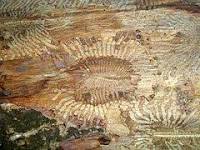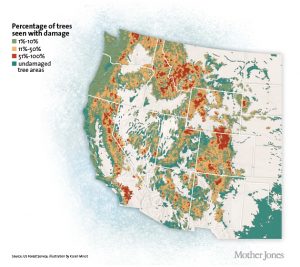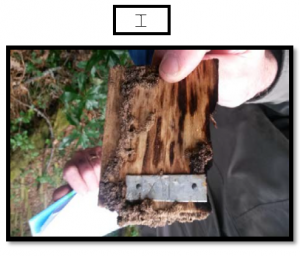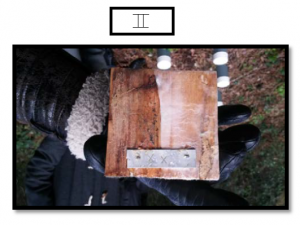Are the trees appearing to be dead?
And does the tree bark appears to be dry, damaged and sickly brown, without any sheen?
Then it’s probably because of the nasty bug which is commonly known as THE BARK BEETLE!
Yes, the bark beetle, one of about 220 types of Insect Genera with 6,000 species in the subfamily Scolytinae, are responsible for the damage to forests trees.
Are you aware of the havoc created by these tiny bark beetles in California!?
If not then have a glance at the damage caused to the trees from the following image.
Aerial surveys around the state show more than 20 million dead trees.
This fact is that the bark beetle infestation is not limited to only California.
The ravenous insects have decimated 45 million acres of forest in the Western United States in recent years, including 15 million acres of Forest Service land.
These are the more recent evidence for the bark beetle infestation in woods.
8,600 bags of wood recalled over bark beetle fears
By Conor Macauley BBC NI Agriculture & Environment Correspondent
8 September 2017 |Northern Ireland
Six major retailers in Northern Ireland have had to destroy or send back thousands of bags of firewood they had on sale because it posed a potential risk to commercial forestry.
A total of 8,600 bags of conifer firewood were taken off the shelves. It followed an inspection by plant inspectors from the Forest Service.
They found the wood was from Britain where a certain type of beetle exists that is not present in NI, and that the wood did not comply with regulations.
Beetles Threatening Alabama Timber
By Alex Aubuchon & Apr student reporter Allison Mollenkamp • Sep 5, 2017
Alabama’s eleven billion dollar timber industry could be at risk due to a very small bug.
Southern Pine Beetle populations have reached epidemic levels in Montgomery County. The beetles are also found in the Oakmulgee District of the Talladega National Forest and an area including Marengo, Clarke, and Choctaw counties.
Tree-Eating Beetles March Northward, Lured by Milder Winters
By HIROKO TABUCHI | AUG. 28, 2017
For lovers of the stately pine forests of the Northeast, sightings of a destructive tree-eating beetle in recent years have been nothing short of alarming.
Southern pine beetles are now frequently spotted in New Jersey, New Yorkand parts of New England. And their range will only grow farther as the planet continues to warm, according to a study published on Monday in the journal Nature Climate Change.
By midcentury, some 40,000 square miles of the pitch pine forests from eastern Ohio to southern Maine will be hospitable to the beetle. And by 2080, vast areas of forest in the northeastern United States and into Ontario and Quebec will be vulnerable.
The bark beetles responsible for such deep infestation are the tiny pesky pests of  size approximately 5 mm. Bark beetles reproduce in the inner bark (living and dead phloem and cambium tissues) of trees. Adults typically appear in the spring and females deposit eggs in galleries just under the bark. The eggs hatch into small white legless larvae with brown heads. The larvae tunnel under the bark as they eat and grow, producing winding tunnels between the bark and the sapwood of the tree.
size approximately 5 mm. Bark beetles reproduce in the inner bark (living and dead phloem and cambium tissues) of trees. Adults typically appear in the spring and females deposit eggs in galleries just under the bark. The eggs hatch into small white legless larvae with brown heads. The larvae tunnel under the bark as they eat and grow, producing winding tunnels between the bark and the sapwood of the tree.
Though small, the Bark beetles play an important role in forest ecology, for example by creating complex early successional forest. Infestations can have a significant economic impact.
In undisturbed forests, bark beetles serve the purpose of hastening the recycling and decomposition of dead and dying wood and renewing the forest. Bark beetles often attack trees that are already weakened by disease, drought, smog, overcrowding, conspecific beetles, or physical damage.
Individuals are not much larger than a piece of cooked rice. They survive in trees that are stressed or diseased and cannot secrete enough defensive resin, or sap, to drown the beetles. The beetles emit pheromones that attract other beetles. This can result in heavy infestations and eventually death of the tree.
There is an urgent need to find an effective solution to protect our wood.
And we have one!
Our company C Tech Corporation provides you with an eco-friendly solution Combirepel™.
Combirepel™ manufactured by using green practices is developed against these insects. It is an excellent aversive which not only protects wood from beetle infestation but also reduces the colonial expansion of them in woods.
Combirepel™ is an extremely low concern, low toxic, non-hazardous and non-mutagenic INSECT aversive.
It is durable at extreme climatic conditions such as changes in temperature, rainfall, etc. Our product is ROHS, ROHS2, ISO 9001:2000, ISO 14001:1996, APVMA, NEA complaint and FIFRA exempted. Our product will not kill the targeted as well as non-targeted species but only repel.
Our product works on the mechanism of repellency. It temporarily inhibits the mating cycle of the insects. The product impairs the ability of the insects to reproduce, that is the insects will not lay eggs or the laid eggs will be infertile. The product causes feeding disruption in an insect by triggering an unpleasant reaction within the insect which might try to feed on the application. The product temporarily blocks the reproduction system of the insects by hindering the release of the vital hormones for growth.
Combirepel™ is available in many forms i.e. coating, Liquid solution, and Lacquer.
Besides this, we offer pre-dispersed Combirepel™ plastic masterbatches that can be added to film, pipes, even cables to protect them from the ravaging insects
The Breathable Combirepel™ lacquer is a proper solution to be used for wood protection.
Our patented Combirepel™ Breathable product lacquer can be applied on the wooden surfaces of antiques, heritage structures, utility poles, fences, shipping industry, etc.
The following images show the application of lacquer form over the wood surface.
The sample I was without the coating and Sample II was with the coating of our Combirepel™ lacquer or coating product and was tested under field conditions for several years.
It can be clearly seen that sample I is completely destroyed by pests and the Combirepel™ Treated sample II was pest free which shows our product efficiency while maintaining ecological balance as none of our products are toxic either to animals, insects or the environment.
The lacquer is transparent and breathable and is applied as a direct coating over the wood surface to be covered.
Combirepel™ Lacquers and coatings do not interfere with the aesthetic properties of the application.
Combirepel™ Lacquers and coatings enhance the properties of wood by adding glossy appearance.
Thus Combirepel™ Lacquers and coatings provide you with the best protection from the beetle infestation in woods in an eco-friendly way.
Talk to us, for any problems with insects, animals or both!
WE HAVE A SOLUTION FOR YOU!
Contact us at technical.marketing@ctechcorporation.com to keep the pests away.
Also, visit our websites:
http://www.ctechcorporation.com/
http://www.rodrepel.com/
http://www.termirepel.com/
http://www.combirepel.com/
Follow our Facebook pages at:
1] https://www.facebook.com/Combirepel-411710912249274/
2] https://www.facebook.com/Termirepel-104225413091251/
3] https://www.facebook.com/Rodrepel-120734974768048/
Follow us on our Twitter pages at:
1] https://twitter.com/rodrepel
2] https://twitter.com/termirepel
3] https://twitter.com/combirepel



